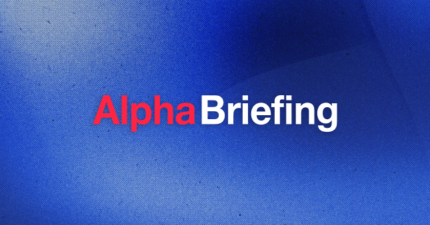Executive Order 14067: What Is It, Pros & Cons
Executive Order 14067 has the potential to change the world of cryptocurrency and digital assets, setting the stage for significant shifts in how digital assets (like Bitcoin) are viewed and managed in the United States.
But what exactly is it, and why should it matter to you?
Many people are worried the financial system is moving in the wrong direction. Only 16% of the American public supports the introduction of a Central Bank Digital Currency (CBDC).
While Executive Order 14067 didn’t make any concrete decisions about CBDCs, it did pave the way for a thorough evaluation. Below, we’ll summarize the key points and discuss the pros and cons of Executive Order 14067.
What Is Executive Order 14067?
Executive Order 14067, signed by President Joe Biden on March 9, 2022, was an important directive from the White House with significant implications for the U.S.’s financial strategy.
This Executive Order focused on the federal government’s approach to cryptocurrency and digital asset strategy with a few key objectives:
- Ensure the U.S. remains at the forefront of blockchain technology and digital asset innovation.
- Provide safe and affordable financial services, all while protecting your data privacy.
- Mitigate the financial risks that could affect the broader economic fabric of the nation.
Despite misconceptions, this Executive Order didn’t aim to replace the U.S. dollar with cryptocurrency or eliminate physical currency. However, it did move the U.S. a step closer in that direction.
Imagine a future where your transactions are incredibly efficient, secure, and transparent — this was the vision behind President Biden’s initiative. It also recognized the role of digital assets in America‘s financial ecosystem, stressing the significance of both innovation and regulatory frameworks.
Biden’s Executive Order was a blueprint. It was the starting point for government agencies to study and develop policies that balance risk and reward within the digital asset space.
Federal Agency Framework and Reports from Executive Order 14067
The collective response by federal agencies to Executive Order 14067 focuses on two main goals:
- Promote innovation in the digital asset space.
- Balance this innovation with regulatory oversight.
The U.S. Treasury and other federal entities introduced guidelines based on these goals. They wanted to promote industry-led research while supporting American firms in securing a place in international markets for digital assets.
Federal agencies put forward a dual approach to navigate the digital asset ecosystem.
On one hand, they suggested bolstering the enforcement of current laws to protect against the abuse of this new technology. On the other, they advocated establishing practical efficiency standards in diverse areas like cryptocurrency mining to curtail potential environmental impacts.
In anticipation of the possible implementation of a U.S. Central Bank Digital Currency, federal recommendations emphasized the importance of continuation in the Federal Reserve‘s CBDC-focused projects.
Regulatory bodies, including the newly recommended Treasury-led interagency group, were slated to assist the Federal Reserve in ensuring a steady and informed exploration of a potential CBDC.
The Atlantic Council and various Congressional committees are key to formulating these policy recommendations, ensuring that proposed frameworks align with broader economic and strategic objectives. Understanding these developments is crucial as they have far-reaching implications for the future of finance and technology.
For a more detailed insight into the comprehensive framework for the responsible development of digital assets constructed by these federal reports, refer to the White House‘s official release.
Key Points of Executive Order 14067
Recognized the Potential Benefits of Digital Assets
Executive Order 14067 acknowledged the potential of digital assets to promote development within the financial services sector.
It also recognized that digital currency can streamline payments, making transactions faster and more cost-effective, which could stimulate the economy.
Overall, the Executive Order underscored the Biden administration‘s commitment to encouraging the responsible growth of the digital asset marketplace while ensuring financial stability.
Addressed the Potential Risks of Digital Assets
Despite the possible benefits, the Executive Order also highlighted concerns surrounding digital assets. It stressed the need for consumer protection and security against illicit finance that could pose national security risks.
The Executive Order called for measures to safeguard the financial system against these threats and to protect consumers participating in digital asset transactions.
Called for a Comprehensive Approach to Digital Asset Policy
Executive Order 14067 didn’t just focus on piecemeal solutions. Rather, it advocated for a comprehensive approach to digital asset policy.
The aim was to balance the potential advantages, like encouraging development in the digital asset space, with mitigating considerable financial and national security risks.
Emphasized International Cooperation
In recognition of the global nature of digital assets, the Executive Order strongly emphasized international cooperation. It advocated for working with allies and participating in international frameworks such as the Financial Action Task Force to ensure global financial stability.
This aspect ensured that U.S. policies align with those of other nations for a synchronized approach to the regulation and supervision of digital currencies.
Pros of Executive Order 14067
Executive Order 14067 standardized the approach to overseeing and developing digital assets. But how did it directly benefit consumers and businesses?
Protecting Consumers, Investors, and Businesses
The Executive Order mandated federal agencies to establish regulatory and supervisory standards geared toward minimizing fraud and enhancing consumer and investor protection. This move aimed to build trust in digital assets and cryptocurrency by ensuring your investments are safer.
Promoting Access to Affordable Financial Services
By encouraging affordable access to financial services, Executive Order 14067 aimed to provide financial inclusion and equity. It recognized the role of digital assets in providing more accessible financial services, potentially reducing costs and expanding financial participation.
Promoting Consumer Protection and Financial Stability
Regulatory efforts will focus on maintaining financial stability and consumer protection. The U.S. government aimed to ensure the digital assets market doesn’t compromise the integrity of financial systems or expose consumers to unnecessary risks.
Supporting Innovation and Technological Advancement
The Executive Order signified a balance between regulation and the need for responsible innovation. This government oversight won’t stifle creativity but will instead promote sustainable technological advancement, providing an environment for cryptocurrency growth.
Enhancing International Collaboration
Acknowledging the borderless nature of digital assets, Executive Order 14067 called for enhancing interoperability and international collaboration.
Such cooperation aimed to align regulatory certainty and oversight to promote shared democratic values, offer privacy protections, and ensure transparency. All of this benefits you by creating a more secure global digital economy.
Cons of Executive Order 14067
Executive Order 14067 was signed with the goal of advancing the U.S. financial system. However, it also came with potential downsides, especially regarding regulation and economic impact.
Regulatory Uncertainty and Potential for Overregulation
You might feel uncertain due to the lack of clear regulatory frameworks regarding digital assets. This ambiguity could lead to overregulation, which might stifle innovation and complicate compliance for financial institutions.
In trying to protect the traditional banking system and ensure investor protection, there’s a risk of creating a restrictive environment for new financial products and services.
Potential Impact on Consumer Choice and Access
New regulations could limit your access to a broad spectrum of financial products and services. Greater control and stringent rules may reduce consumer choice.
In turn, you may lose certain freedoms in the financial marketplace. This could affect how easily you can engage with commercial banks and emerging financial technologies.
Challenges in Enforcement and Compliance
Enforcement of new directives may pose significant challenges for you if you’re part of a financial institution or an investor maneuvering through the system.
Compliance could become more complex, costly, and time-consuming, necessitating frequent liaising with regulators. Systemic risk may increase along with the costs for consumers.
Potential for Negative Impact on Innovation and Economic Growth
In seeking to maintain U.S. economic competitiveness and economic growth, the Executive Order‘s regulations might paradoxically hinder innovation.
Heavy-handed regulations could deter investment in new technologies and dissuade entrepreneurs from developing solutions within the U.S. dollar-based financial system. In turn, the overall economic growth trajectory could be affected.
To access this resource, please provide a little info.
Complete the form below to view the document.


